 W
WRhetoric is the art of persuasion, which along with grammar and logic, is one of the three ancient arts of discourse. Rhetoric aims to study the capacities of writers or speakers needed to inform, persuade, or motivate particular audiences in specific situations. Aristotle defines rhetoric as "the faculty of observing in any given case the available means of persuasion" and since mastery of the art was necessary for victory in a case at law; or for passage of proposals in the assembly; or for fame as a speaker in civic ceremonies; he calls it "a combination of the science of logic and of the ethical branch of politics". Rhetoric typically provides heuristics for understanding, discovering, and developing arguments for particular situations, such as Aristotle's three persuasive audience appeals: logos, pathos, and ethos. The five canons of rhetoric or phases of developing a persuasive speech were first codified in classical Rome: invention, arrangement, style, memory, and delivery.
 W
WAir quotes, also called finger quotes, are virtual quotation marks formed in the air with one's fingers when speaking. This is typically done with both hands held shoulder-width apart and at the eye or shoulders level of the speaker, with the index and middle fingers on each hand flexing at the beginning and end of the phrase being quoted. The air-quoted phrase is—in the most common usage—very short, at most a few words. Air quotes are often used to express satire, sarcasm, irony or euphemism, among others, and are analogous to scare quotes in print.
 W
WAnatomy of Criticism: Four Essays is a book by Canadian literary critic and theorist Northrop Frye that attempts to formulate an overall view of the scope, theory, principles, and techniques of literary criticism derived exclusively from literature. Frye consciously omits all specific and practical criticism, instead offering classically inspired theories of modes, symbols, myths and genres, in what he termed "an interconnected group of suggestions." The literary approach proposed by Frye in Anatomy was highly influential in the decades before deconstructivist criticism and other expressions of postmodernism came to prominence in American academia circa 1980s.
 W
WThe Asiatic style or Asianism refers to an Ancient Greek rhetorical tendency that arose in the third century BC, which, although of minimal relevance at the time, briefly became an important point of reference in later debates about Roman oratory.
 W
WCicero's Brutus is a history of Roman oratory. It is written in the form of a dialogue, in which Brutus and Atticus ask Cicero to describe the qualities of all the leading Roman orators up to their time. Cicero then attempts to propose a reconstruction of Roman history. Although it is written in the form of a dialogue, the majority of the talking is done by Cicero with occasional intervention by Brutus and Atticus. The work was probably composed in 46 BC, with the purpose of defending Cicero's own oratory. He begins with an introductory section on Greek oratory of the Attic, Asiatic, and Rhodian schools, before discussing Roman orators, beginning with Lucius Junius Brutus, "The Liberator", though becoming more specific from the time of Marcus Cornelius Cethegus.
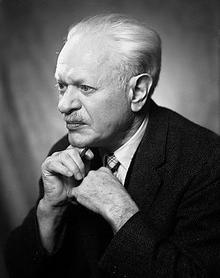 W
WKenneth Duva Burke was an American literary theorist, as well as poet, essayist, and novelist, who wrote on 20th-century philosophy, aesthetics, criticism, and rhetorical theory. As a literary theorist, Burke was best known for his analyses based on the nature of knowledge. Furthermore, he was one of the first individuals to stray away from more traditional rhetoric and view literature as "symbolic action."
 W
WA burlesque is a literary, dramatic or musical work intended to cause laughter by caricaturing the manner or spirit of serious works, or by ludicrous treatment of their subjects. The word derives from the Italian burlesco, which, in turn, is derived from the Italian burla – a joke, ridicule or mockery.
 W
WChironomia is the art of using gesticulations or hand gestures to good effect in traditional rhetoric or oratory. Effective use of the hands, with or without the use of the voice, is a practice of great antiquity, which was developed and systematized by the Greeks and the Romans. Various gestures had conventionalized meanings which were commonly understood, either within certain class or professional groups, or broadly among dramatic and oratorical audiences.
 W
WCommentary on Cicero's Dream of Scipio is a philosophical treatise of Macrobius based on the famous dream narrated in On the republic of Cicero.
 W
WCommon sense is sound, practical judgment concerning everyday matters, or a basic ability to perceive, understand, and judge in a manner that is shared by nearly all people.
 W
WComposition studies is the professional field of writing, research, and instruction, focusing especially on writing at the college level in the United States. The flagship national organization for this field is the Conference on College Composition and Communication.
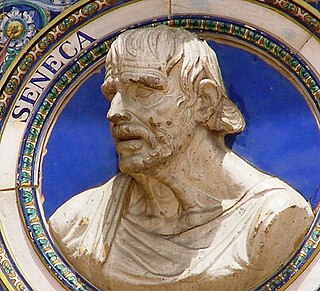 W
WA controversia is an exercise in rhetoric; a form of declamation in which the student speaks for one side in a notional legal case such as treason or poisoning. The facts of the matter and relevant law are presented in a persuasive manner, in the style of a legal counsel.
 W
WThe Corps Altsachsen is a fraternity (Studentenverbindung) in Dresden, Germany. It was founded on October 31, 1861 and is one of 162 German Student Corps in Germany, Austria, Switzerland, Belgium, Latvia and Hungary today. The Corps is a member of the Weinheimer Senioren-Convent (WSC), the second oldest federation of classical Fraternities in Europe with roots dating back to the 15th century.
 W
WDecorum was a principle of classical rhetoric, poetry and theatrical theory concerning the fitness or otherwise of a style to a theatrical subject. The concept of decorum is also applied to prescribed limits of appropriate social behavior within set situations.
 W
WDialogue is a written or spoken conversational exchange between two or more people, and a literary and theatrical form that depicts such an exchange. As a philosophical or didactic device, it is chiefly associated in the West with the Socratic dialogue as developed by Plato, but antecedents are also found in other traditions including Indian literature.
 W
WDigital rhetoric is a way of informing, persuading, and inspiring action in an audience through digital media that is composed and distributed via multimedia platforms. Due to the increasingly mediated nature of our contemporary society, there are no longer clear distinctions between digital and non-digital environments. This has led to an expansion of the scope of digital rhetoric as there is a need to account for the increased fluidity with which humans interact with technology. Contrary to past conceptions, the definition of rhetoric can no longer be confined to simply the sending and receiving of messages to persuade or impart knowledge. While this represents a primarily ancient Western view of rhetoric, Arthur Smith of UCLA explains that the ancient rhetoric of many cultures, such as African rhetoric, existed independent of Western influence. Today, rhetoric encompasses all forms of discourse that serve any given purpose within specific contexts, while also simultaneously being shaped by those contexts.
 W
WA dilemma is a problem offering two possibilities, neither of which is unambiguously acceptable or preferable. The possibilities are termed the horns of the dilemma, a clichéd usage, but distinguishing the dilemma from other kinds of predicament as a matter of usage.
 W
WThe dramatistic pentad forms the core structure of dramatism, a method for examining motivations that the renowned literary critic Kenneth Burke developed. Dramatism recommends the use of a metalinguistic approach to stories about human action that investigates the roles and uses of five rhetorical elements common to all narratives, each of which is related to a question. These five rhetorical elements form the "dramatistic pentad". Burke argues that an evaluation of the relative emphasis that is given to each of the five elements by a human drama enables a determination of the motive for the behaviour of its characters. A character's stress on one element over the others suggests their world view.
 W
WEgalitarian dialogue is a dialogue in which contributions are considered according to the validity of their reasoning, instead of according to the status or position of power of those who make them. Although previously used widely in the social sciences and in reference to the Bakhtinian philosophy of dialogue, it was first systematically applied to dialogical education by Ramón Flecha in his 2000 work Sharing Words. Theory and Practice of Dialogic Learning.
 W
WEnantiosis, synoeciosis or discordia concors is a rhetorical device in which opposites are juxtaposed so that the contrast between them is striking. Examples include the famous maxim of Augustus, festina lente, and the following passage from Paul's second letter to the Corinthians:By honour and dishonour, by evil report and good report: as deceivers, and yet true;As unknown, and yet well known; as dying, and, behold, we live; as chastened, and not killed;As sorrowful, yet alway rejoicing; as poor, yet making many rich; as having nothing, and yet possessing all things.
 W
WThe Epitome margaritae eloquentiae in Leeds Special Collections is the only surviving copy of a book on rhetoric written in Latin by Lorenzo Guglielmo Traversagni (c.1425-1503). The author used the pen name Guillermus Saphoensis in this work.
 W
WEthos is a Greek word meaning "character" that is used to describe the guiding beliefs or ideals that characterize a community, nation, or ideology. The Greeks also used this word to refer to the power of music to influence emotions, behaviors, and even morals. Early Greek stories of Orpheus exhibit this idea in a compelling way. The word's use in rhetoric is closely based on the Greek terminology used by Aristotle in his concept of the three artistic proofs or modes of persuasion. It gives credit to the speaker, or the speaker is taking credit.
 W
WA figure of speech or rhetorical figure is a word or phrase that entails an intentional deviation from ordinary language use in order to produce a rhetorical effect. Figures of speech are traditionally classified into schemes, which vary the ordinary sequence or pattern of words, and tropes, where words are made to carry a meaning other than what they ordinarily signify.
 W
WFirst-year composition is an introductory core curriculum writing course in US colleges and universities. This course focuses on improving students' abilities to write in a university setting and introduces students to writing practices in the disciplines and professions. These courses are traditionally required of incoming students, thus the previous name, "Freshman Composition." Scholars working within the field of composition-rhetoric often have teaching first-year composition (FYC) courses as the practical focus of their scholarly work.
 W
WThe International Roman Law Moot Court (IRLMC) is an international European annual moot court competition in Roman law.
 W
WJugend debattiert international is a German-language debating competition for students based on the national German pupils' contest Jugend debattiert. It is held in ten countries of Central and Eastern Europe: Estonia, Latvia, Lithuania, Poland, Russia, Slovakia, Slovenia, Czech Republic, Ukraine and Hungary. The project is funded by the Goethe-Institut, the Foundation "Remembrance, Responsibility and Future", the Hertie Foundation and the Central Agency for German Schools Abroad. There are local supporters in three countries: In Czech Republic, the project is supported by the Czech-German Future Fund, in Lithuania, by the Lithuanian Information and Technology Center for students. In Poland, Jugend debattiert international is supported by the Foundation for Polish-German Cooperation.
 W
WKairos is an Ancient Greek word meaning the right, critical, or opportune moment. The ancient Greeks had two words for time: chronos (χρόνος) and kairos. The former refers to chronological or sequential time, while the latter signifies a proper or opportune time for action. While chronos is quantitative, kairos has a qualitative, permanent nature. Kairos also means weather in Modern Greek. The plural, καιροί means the times. Kairos is a term, idea, and practice that has been applied in several fields including classical rhetoric, modern rhetoric, digital media, Christian theology, and science.
 W
WJean-Marie Klinkenberg is a Belgian linguist and semiotician, professor at the State University of Liège, born in Verviers (Belgium) in 1944. Member of the interdisciplinary Groupe µ. President of the International Association for visual Semiotics.
 W
WA laconic phrase or laconism is a concise or terse statement, especially a blunt and elliptical rejoinder. It is named after Laconia, the region of Greece including the city of Sparta, whose ancient inhabitants had a reputation for verbal austerity and were famous for their blunt and often pithy remarks.
 W
WLogos is a term in Western philosophy, psychology, rhetoric, and religion derived from a Greek word variously meaning "ground", "plea", "opinion", "expectation", "word", "speech", "account", "reason", "proportion", and "discourse". It became a technical term in Western philosophy beginning with Heraclitus, who used the term for a principle of order and knowledge.
 W
WMagnanimity is the virtue of being great of mind and heart. It encompasses, usually, a refusal to be petty, a willingness to face danger, and actions for noble purposes. Its antithesis is pusillanimity. Although the word magnanimity has a traditional connection to Aristotelian philosophy, it also has its own tradition in English which now causes some confusion.
 W
WThe method of loci is a strategy of memory enhancement which uses visualizations of familiar spatial environments in order to enhance the recall of information. The method of loci is also known as the memory journey, memory palace, or mind palace technique. This method is a mnemonic device adopted in ancient Roman and Greek rhetorical treatises. Many memory contest champions report using this technique to recall faces, digits, and lists of words.
 W
WMudsill theory is the proposition that there must be, and always has been, a lower class or underclass for the upper classes and the rest of society to rest upon. The term derives from a mudsill, the lowest threshold that supports the foundation for a building.
 W
WNasreddin or Nasreddin Hodja or Mullah Nasreddin Hooja or Mullah Nasruddin (1208-1285) was a Seljuq satirist, born in Hortu Village in Sivrihisar, Eskişehir Province, present-day Turkey and died in 13th century in Akşehir, near Konya, a capital of the Seljuk Sultanate of Rum, in today's Turkey. He is considered a philosopher, Sufi, and wise man, remembered for his funny stories and anecdotes. He appears in thousands of stories, sometimes witty, sometimes wise, but often, too, a fool or the butt of a joke. A Nasreddin story usually has a subtle humour and a pedagogic nature. The International Nasreddin Hodja festival is celebrated between 5 and 10 July in his hometown every year.
 W
WThe New Science is the major work of Italian philosopher Giambattista Vico. It was first published in 1725 to little success, but has gone on to be highly regarded and influential in the philosophy of history, sociology, and anthropology. The central concepts were highly original and prefigured the Age of Enlightenment.
 W
WA paraphrase is a restatement of the meaning of a text or passage using other words. The term itself is derived via Latin paraphrasis from Greek παράφρασις, meaning "additional manner of expression". The act of paraphrasing is also called "paraphrasis".
 W
WThe "Power of Women" is a medieval and Renaissance artistic and literary topos, showing "heroic or wise men dominated by women", presenting "an admonitory and often humorous inversion of the male-dominated sexual hierarchy". It was defined by Susan L. Smith as "the representational practice of bringing together at least two, but usually more, well-known figures from the Bible, ancient history, or romance to exemplify a cluster of interrelated themes that include the wiles of women, the power of love, and the trials of marriage". Smith argues that the topos is not simply a "straightforward manifestation of medieval antifeminism"; rather, it is "a site of contest through which conflicting ideas about gender roles could be expressed".
 W
WA prosopopoeia is a rhetorical device in which a speaker or writer communicates to the audience by speaking as another person or object. The term literally derives from the Greek roots prósopon "face, person", and poiéin "to make, to do;" it is also called personification.
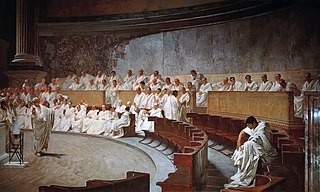 W
WPublic speaking is giving speech face to face to live audience. However, due to the evolution of public speaking, it is modernly viewed as any form of speaking between an audience and the speaker. Traditionally, public speaking was considered to be a part of the art of persuasion. The act can accomplish particular purposes including to inform, to persuade, and to entertain. Additionally, differing methods, structures, and rules can be utilized according to the speaking situation.
 W
WRAS syndrome is the use of one or more of the words that make up an acronym in conjunction with the abbreviated form. This means, in effect, repeating one or more words from the acronym. Three common examples are "PIN number" / "VIN number" and "ATM machine". The term RAS syndrome was coined in 2001 in a light-hearted column in New Scientist.
 W
WThe Rhetoric to Alexander is a treatise traditionally attributed to Aristotle. It was written by a Pseudo-Aristotle instead and is now generally believed to be the work of Anaximenes of Lampsacus.
 W
WSatire is a genre of literature and performing arts, usually fiction and less frequently in non-fiction, in which vices, follies, abuses and shortcomings are held up to ridicule, ideally with the intent of shaming individuals, corporations, government, or society itself into improvement. Although satire is usually meant to be humorous, its greater purpose is often constructive social criticism, using wit to draw attention to both particular and wider issues in society.
 W
WThomas Sheridan was an Irish stage actor, an educator, and a major proponent of the elocution movement. He received his M.A. in 1743 from Trinity College in Dublin, and was the godson of Jonathan Swift. He also published a "respelled" dictionary of the English language (1780). He was married (1747) to Frances Chamberlaine. His son was the better known Richard Brinsley Sheridan, while his daughters were also writers - Alicia, a playwright, and Betsy Sheridan a diarist. His work is very noticeable in the writings of Hugh Blair.
 W
WStealing thunder is to take someone else's idea, using it for one's own advantage or to pre-empt the other party.
 W
WSuasoria is an exercise in rhetoric: a form of declamation in which the student makes a speech which is the soliloquy of an historical figure debating how to proceed at a critical junction in their life. As an academic exercise, the speech is delivered as if in court against an adversary and was based on the Roman rhetorical doctrine and practice. The ancient Roman orator Quintilian said that suasoria may call upon a student to address an individual or groups such as the Senate, the citizens of Rome, Greeks or barbarians. The role-playing exercise developed the student's imagination as well as their logical and rhetorical skills.
 W
WThe Sumerian disputation or Sumerian debate is a topical short story created in the middle-to-late 3rd millennium BC. Seven major debates are known, with specific titles.
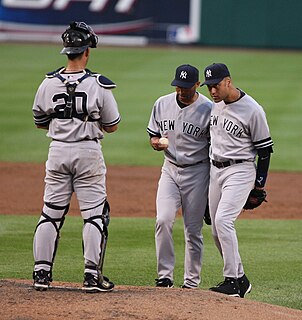 W
WA synecdoche is a figure of speech in which a term for a part of something refers to the whole of something or vice versa.
 W
WA thesis or dissertation is a document submitted in support of candidature for an academic degree or professional qualification presenting the author's research and findings. In some contexts, the word "thesis" or a cognate is used for part of a bachelor's or master's course, while "dissertation" is normally applied to a doctorate, while in other contexts, the reverse is true. The term graduate thesis is sometimes used to refer to both master's theses and doctoral dissertations.
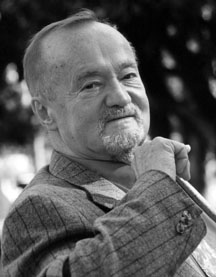 W
WStephen Edelston Toulmin was a British philosopher, author, and educator. Influenced by Ludwig Wittgenstein, Toulmin devoted his works to the analysis of moral reasoning. Throughout his writings, he sought to develop practical arguments which can be used effectively in evaluating the ethics behind moral issues. His works were later found useful in the field of rhetoric for analyzing rhetorical arguments. The Toulmin model of argumentation, a diagram containing six interrelated components used for analyzing arguments, and published in his 1958 book The Uses of Argument, was considered his most influential work, particularly in the field of rhetoric and communication, and in computer science.
 W
WWord play or wordplay is a literary technique and a form of wit in which words used become the main subject of the work, primarily for the purpose of intended effect or amusement. Examples of word play include puns, phonetic mix-ups such as spoonerisms, obscure words and meanings, clever rhetorical excursions, oddly formed sentences, double entendres, and telling character names.